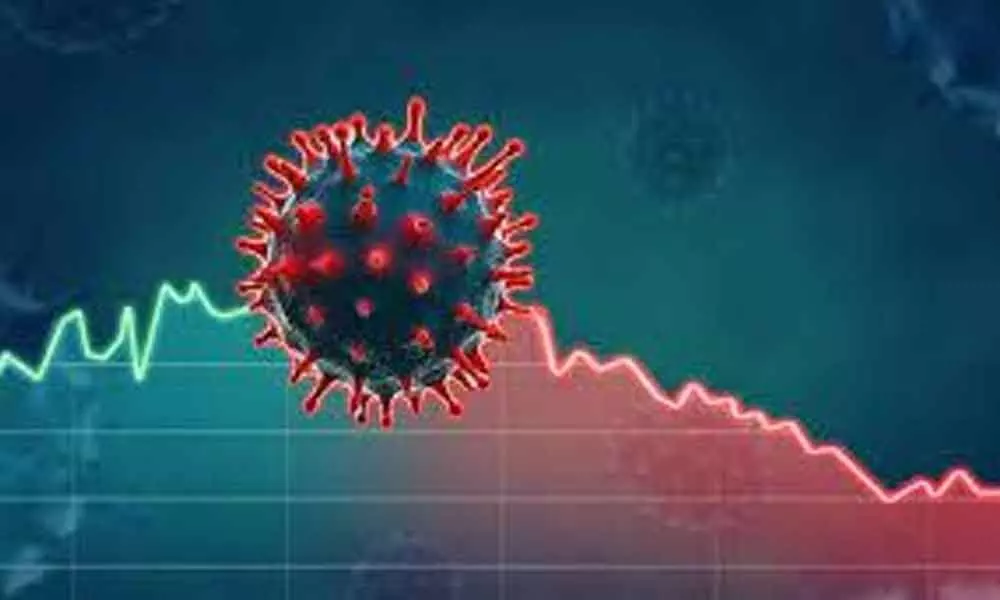Covid-19 crisis poses economic risk: Finance Ministry

Covid-19 crisis poses economic risk: Finance Ministry
New Delhi: As States take to lockdowns amid the severe Covid crisis, the Union Finance Ministry in a report said the second wave of the Covid-19 poses downside risk to economic activities during April-June, although the impact is expected to be muted compared to that in the first wave.
The 'Monthly Economic Review' for April 2021 published by the Department of Economic Affairs (DEA) said that learning to "operate with Covid-19" provides a silver lining of economic resilience amidst the second wave.
"The second wave of Covid-19 has posed a downside risk to economic activity in the first quarter of FY 2021-22. However, there are reasons to expect a muted economic impact as compared to the first wave. Learning to "operate with Covid-19", as borne by international experience, provides a silver lining of economic resilience amidst the second wave," it said.
Noting that the global economy recovered further in March and April, powered with vaccination drives and fiscal stimuli by few large economies, it said that in India the momentum in economic recovery since the first wave moderated in April due to the second wave of coronavirus.
It said that agriculture continues to be the silver lining with record food grain production estimated in the ensuing crop year on the back of predicted normal monsoons.
Rural demand indicators like tractor sales recorded a growth of 172 per cent and 36 per cent compared to a low base in March 2020 and even the pre-Covid month of March 2019, respectively.
Industrial production showed mixed trends. While Index of Industrial Production (IIP) in February 2021 registered a broad-based decline of 3.6 per cent (YoY) and 3.9 per cent compared to January 2021, the eight-core index posted a growth of 6.8 per cent (YoY) in March 2021 and 11.1 per cent compared to February 2021.
In FY 2020-21, the core sector contracted by 7 per cent compared to 0.4 per cent growth in FY 2019-20 with fertilizer being the sole growing sector and electricity recovering steadily in the second half.
The Purchasing Managers Index for manufacturing rose further to 55.5 in April with consumer goods as the strongest-performing category, followed by capital goods and then intermediate goods. The rebound was also reflected in RBI's survey estimates on capacity utilization and manufacturers' optimism for the current year, the report said.
In the second half of FY 2020-21, GST collections registered a good growth and collections exceeded Rs 1 lakh crore in each of the last six months owing to economic recovery. GST collections registered another record high of Rs 1.41 lakh crore in April, indicative of continual economic recovery.
















